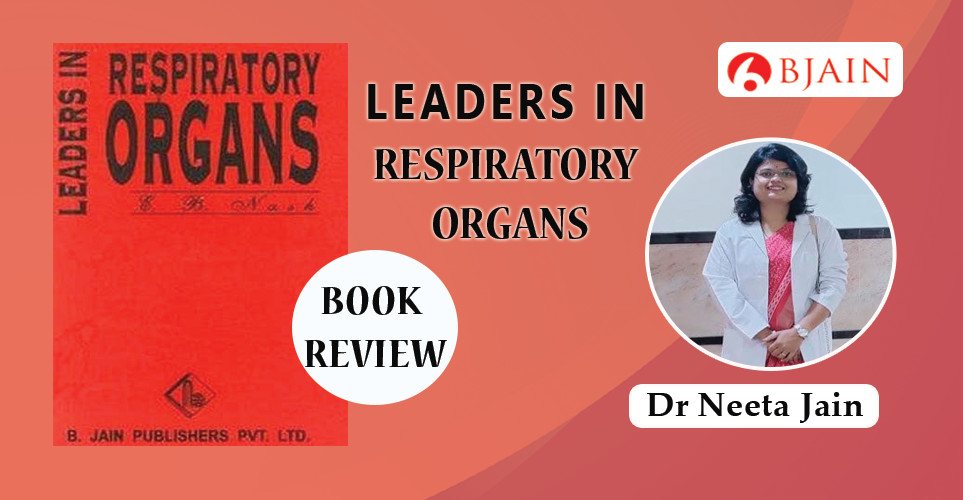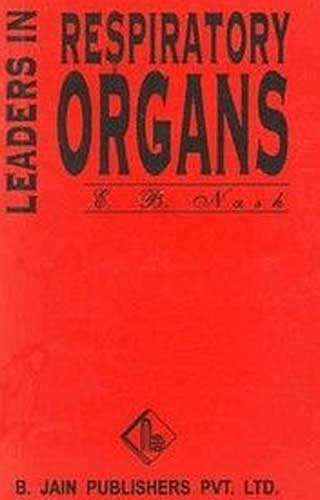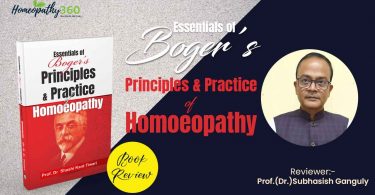
Dr. Neeta Jain is a dedicated Assistant Professor at Pt. Jawaharlal Nehru State Homoeopathic Medical College in Kanpur, India. She is completed a master’s degree in Homeopathy (Practice of Medicine) from the esteemed Government Homeopathic Medical College in Bhopal in 2020.Throughout her career, Dr. Jain has showcased her expertise by excelling in various government examinations across India, marking her as a distinguished professional in her field. Dr. Jain’s scholarly endeavors are highly commendable, evident in her substantial contributions to esteemed homeopathic medical journals. Her published articles stand as a testament to her dedication to advancing knowledge and understanding in the realm of homeopathy. With her profound knowledge, unwavering commitment, and impressive academic achievements, Dr. Neeta Jain continues to inspire and contribute significantly to the field of homeopathic medicine.
LEADERS IN RESPIRATORY ORGANS: MY PERSPECTIVE
Preface:-Firstly of all, the preface was penned by EB Nash of Port Dickinson, New York. This effort principally aims to support strapped-for-time practitioners and offer clarification to those new to the area. The abridged repertory, which can be found at the end of the book, has been meticulously chosen. Adapt with more formal terminology.
Introduction: –The book is divided into two primary sections. The initial section delves into therapeutic approaches related to respiratory tract diseases, while the subsequent section presents a condensed repertory focused on the same subject matter.
Therapeutic Part: This section comprehensively covers therapeutics related to a range of respiratory conditions, such as Catarrh, Laryngitis, Croup, Bronchitis, Asthma, Pertussis, Pneumonia, Pleuritis, Pulmonary Tuberculosis, and Cough. The author underscores an approach grounded in symptomatology, prioritizing it over an exclusive reliance on diagnosis and pathology.
Part I-Therapeutic Approaches Related to Respiratory Tract Diseases
1) Catarrh
In the segment dedicated to catarrh, the book extensively elucidates acute nasal catarrh, influenza, and chronic nasal catarrh. Furthermore, a concise repertory detailing nasal symptoms is included at the conclusion of the chapter. The content covers the causes, symptoms, diagnosis, and therapeutic approaches for acute nasal catarrh, with a detailed exploration of recommended remedies. Pertinent information on dosage, potencies, and posology is provided for select remedies. Additionally, the therapeutics are systematically outlined based on the stages of catarrh, encompassing the first stage, second stage, and third stage for comprehensive understanding and application.
Eg. Sanguinaria nitrate in third or sixth attenuation dry on the tongue once in two or three hours.
2) Chronic Nasal Catarrh
In Nash’s teachings, he associates these nasal conditions with underlying factors such as syphilis and tuberculosis. He categorizes the manifestations into three forms: simple chronic catarrh, hypertrophic rhinitis, and atrophic rhinitis. Dr. Nash likely provides insights into the pathological aspects of each of these stages in his work.
3) Bronchitis
According to Dr.Nash In the context of homeopathic management of bronchitis, a distinction is made between acute and chronic manifestations of the condition. Remedial approaches are tailored to each stage. In the initial, inflammatory stage, characterized by heightened reactivity and vascular changes, certain key remedies are recommended. The administration of remedies such as aconite, belladonna, and ferrum phosphoricum these remedies are selected based on their perceived efficacy in addressing the characteristic symptoms and pathological aspects associated with the early stages of bronchitis.
4) Pneumonia
The remedies indicated in the first stage are aconite, belladonna, ferrum phos, and veratrum viride. Under some remedies, the dosage and potency are given. The second stage (stage of hepatization) remedies are bryonia, phosphorus, iodine, rhustox, hyosyamus, lachesis, sanguinaria, mercury, chelidonium, antimonium tartaricum, lycopodium, opium, kali carbonicum, carbo veg, arsenicum, sulphur and calcarea carb.he also explains some auxiliary measures for pneumonia.
5) Pulmonary tuberculosis
According to Nash, tuberculosis is addressed with a selection of main remedies that include sulphur, psorinum, tuberculinum, hepar sulphur, calcarea carbonica, phosphorus, arsenicum album, and sanguinaria. In addition to specific remedies, Nash likely elaborates on general measures aimed at supporting the overall health and recovery of tuberculosis patients. This may involve guidance on exercises, such as abdominal and costal breathing, as well as dietary recommendations.
Important Keynotes Of 40 Remedies Are Given After It In Alphabetical Order Except Kali Sulphur.
Part II- Repertory
The therapeutic segment will be followed by a distinct section devoted to repertory. At the conclusion of the therapeutic portion, a few sections also include brief repertoires. It includes three repertory sections total, which are scattered within the book.
- As a part to therapeutics to chronic nasal catarrh — Repertory to nasal symptoms
- As a part to therapeutics to pertussis — Repertory to Pertussis.
- Repertory to nasal symptoms.
Eg. HAY FEVER – Sabadilla, WORSE IN MORNING Nux vomica.
Repertory Proper.
The book is structured with a preface followed by thematic chapters, encompassing topics such as the larynx and trachea, cough, expectoration, respiration, and chest. The rubrics within these chapters are methodically organized, presenting a standardized format. Notably, each rubric commences with the first word in bold roman font, followed by italics. In instances where the rubric denotes a specific location, it is expressed in ordinary capitals. The arrangement of medicines within the rubrics adheres to a graded or hierarchical system based on their perceived importance. Sub Rubrics, whether indicated in italics or ordinary capitalization, are seamlessly integrated into the rubric paragraph. Locations, conditions, diseases, and additional sub rubrics are consistently presented in italics, contributing to a clear and structured delineation of information. The overall presentation adopts a coherent format, enhancing accessibility and readability for the reader.
Larynx and Trachea
The first chapter is Larynx and Trachea. It consists of 31 rubrics. Rubrics are arranged in alphabetical order. It consists of rubrics relating to the larynx, trachea, glottis, and voice.
Cough
It starts with the rubric cough in general, followed by time represented from sunrise to sunset. After that, the rubrics are arranged in alphabetical order. It consists of 109 rubrics.
Expectoration
It starts with time, followed by rubrics in alphabetical order. It consists of 35 rubrics.
Respiration: It consists of rubrics in alphabetical order. It consists of 35 rubrics.
Chest: It consists of rubrics in alphabetical order. It consists of locations like the lungs, mammae, heart, and liver. It consists of 42 rubrics.
Assistant Professor, Pt. Jawaharlal Nehru State Homoeopathic Medical College, Kanpur, India







